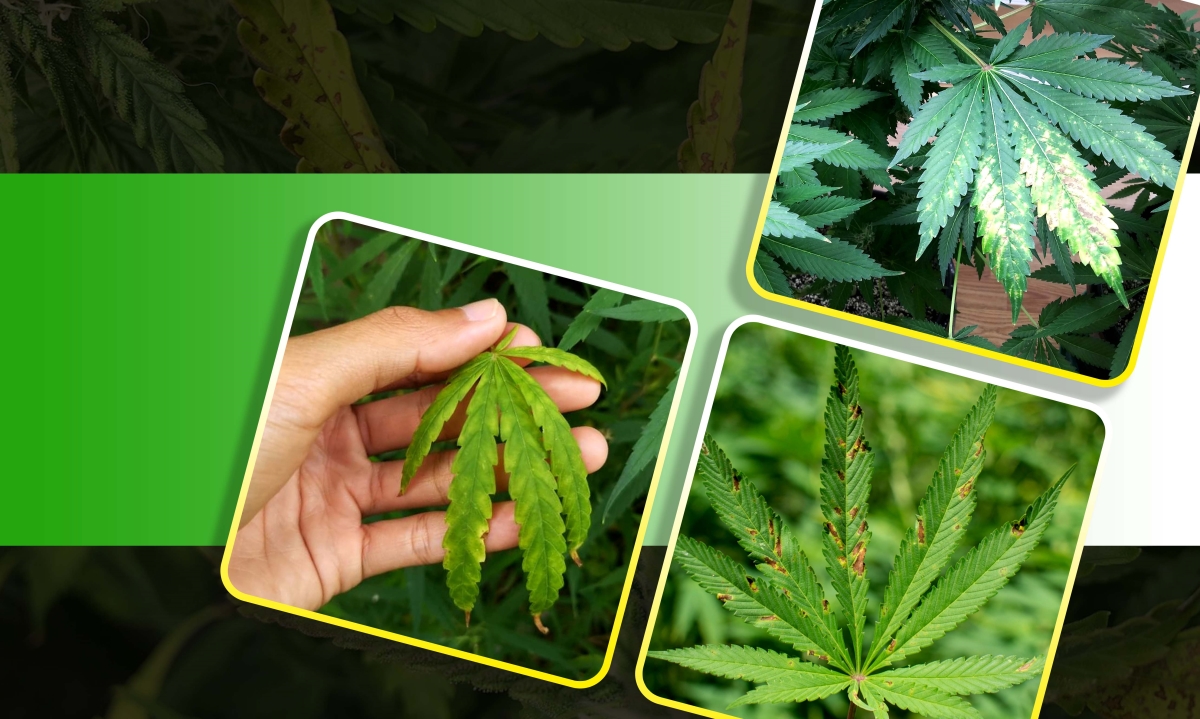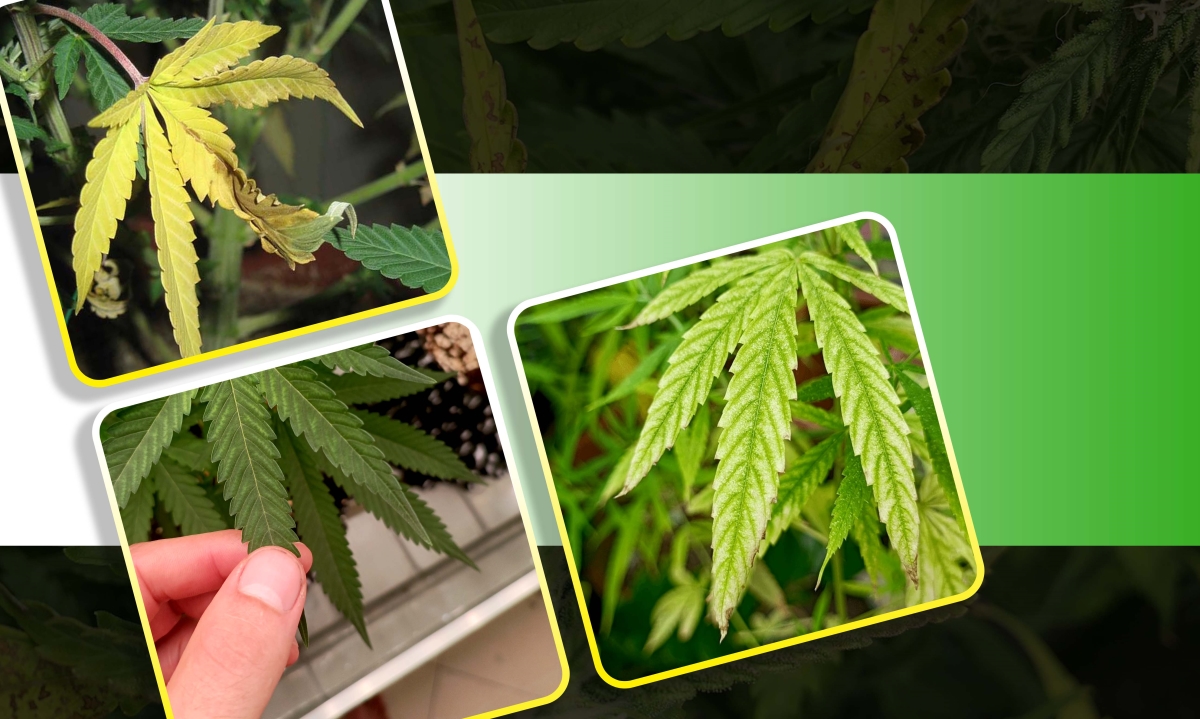Plants require specific nutrients to grow to their full potential as they progress through their developmental stages. Two essential macronutrients that help promote robust growth and advancement are calcium and magnesium. However, during the flowering stage, plants undergo rapid growth and metabolic activity, increasing their demand for these nutrients. Flowering cal mag deficiency can impede crucial functions, adversely affecting flowering and overall plant health.
Table of Contents
Understanding Flowering Cal Mag Deficiency
Cal Mag Deficiency in Cannabis Plants
Magnesium in Cannabis Cultivation
Calcium’s Importance in Cannabis Cultivation
The Importance of Balanced Cal-Mag
Cal Mag Deficiency Symptoms
Preventing Early Cal-Mag Deficiency-Preventive Measures
Conclusion
FAQs
Cal Mag Deficiency in Cannabis Plants
The successful cultivation of cannabis plants requires a balanced supply of essential nutrients. Among these vital elements, calcium (Ca) and magnesium (Mg) play crucial roles in various physiological processes. However, deficiencies in these nutrients can significantly impact plant health and yield of the cannabis plant. Early signs of Cal-Mag deficiency can manifest during the vegetative and flowering stages, impacting plant health and yield. Understanding how to prevent and address Cal-Mag deficiency is crucial for ensuring optimal plant growth.
Magnesium in Cannabis Cultivation
For cannabis plants, magnesium is an essential macronutrient that supports a wide range of metabolic functions. It plays a crucial role in chlorophyll, the pigment required for photosynthesis, which makes it possible for the plant to absorb sunlight and convert it into energy. Magnesium also helps to activate enzymes that are important for protein synthesis, glucose metabolism, and food absorption.
Deficiencies in magnesium can manifest through symptoms such as yellowing or chlorosis of older leaves, as magnesium is mobile within the plant and is translocated to younger tissues when deficient. Therefore, ensuring an adequate supply of magnesium is essential for maintaining healthy cannabis plants and maximizing yields.
Calcium’s Importance in Cannabis Cultivation
Calcium is another essential element that supports the overall health and structure of cannabis plants. It is essential for the development and stability of cell walls, which preserves the elasticity and strength of plant tissues. Moreover, calcium controls some biological processes, such as cell signaling, nutrition transport, and enzyme activation.
Sufficient amounts of calcium are essential in cannabis cultivation to prevent diseases like blossom end rot, which is a common issue where flower buds deteriorate as a result of insufficient calcium. By ensuring sufficient calcium availability, growers can promote strong root development, improve nutrient uptake, and enhance the plant’s resilience to environmental stressors.
The Importance of Balanced Cal-Mag
Macronutrients like calcium and magnesium are needed for the growth and development of cannabis plants. In addition to being essential for cell division and elongation, calcium also supports membrane integrity, cell wall development, and activity of enzymes. Magnesium is an essential part of chlorophyll molecules and is necessary for photosynthesis as well as the transfer of energy inside plants.
Apart from their roles, calcium and magnesium also work in harmony to influence the metabolism of plants and nutrient uptake. Maintaining ideal concentrations of these nutrients is essential to guarantee strong development, resilience to adverse conditions, and the yield of excellent flowering. Growers can grow healthy and high-yielding cannabis crops by keeping balanced nutritional ratios and recognizing the importance of calcium and magnesium.
Cal Mag Deficiency Symptoms
Identifying deficiency symptoms is crucial for timely intervention. Common signs of cal mag deficiency weed during the flowering stage include:
1. Leaf Yellowing: Yellowing or chlorosis starts from the tips and edges of older leaves, progressing inward over time.
2. Leaf Curling: Leaves may exhibit upward or downward curling, accompanied by brittle texture and necrosis along the edges.
3. Stunted Growth: Plants experiencing Cal Mag deficiency may display reduced growth rates, resulting in smaller flowers and lower yields.
4. Blossom End Rot: In severe cases, fruits may develop blossom end rot, characterized by dark, sunken lesions at the blossom end.
Preventing Early Cal-Mag Deficiency-Preventive Measures
1. Balanced Nutrient Solution: Ensure your nutrient solution contains adequate levels of calcium and magnesium. Use a high-quality fertilizer formulated for your specific plant species and growth stage.
2. pH Management: Maintain the pH of your growing medium within the optimal range for nutrient uptake (typically 5.5-6.5 for most plants). Fluctuations in pH can affect the availability of calcium and magnesium to the plant roots.
3. Water Quality: Use clean, pH-balanced water for irrigation to prevent the accumulation of salts and mineral imbalances in the soil or growing medium. Consider testing your water source regularly for mineral content.
4. Foliar Feeding: Supplementing plants with foliar sprays containing calcium and magnesium can provide a quick boost of nutrients and alleviate deficiencies. Apply foliar sprays early in the morning or late in the evening to avoid leaf burn from direct sunlight.
5. Proper Lighting: Ensure plants receive adequate light intensity and duration to support photosynthesis and nutrient uptake. Insufficient light can hinder calcium and magnesium absorption, leading to deficiency symptoms.
Conclusion
Flowering Cal Mag deficiency poses a significant challenge for growers, potentially impacting plant health and yield. By understanding the causes, symptoms, and effective solutions for addressing this deficiency, growers can proactively manage nutrient imbalances and promote robust flowering in their plants. Implementing proper nutrient management practices and providing targeted supplementation can help mitigate cannabis Cal Mag deficiency, ultimately leading to healthier, more productive plants during the flowering stage.
FAQs
1. How do you fix Cal Mag deficiency during flowering?
Answer: Growers have several options for addressing Cal Mag for weed deficit during flowering. They should first add calcium and magnesium amendments to the soil or growing medium. Nutrient intake is facilitated when pH levels are adjusted to the ideal range. Plants lacking in calcium and magnesium can benefit immediately from foliar treatments. Furthermore, ensuring that plants receive enough calcium and magnesium during the flowering phase through a balanced nutrient-feeding schedule helps to promote good flowering and reduce signs of deficiency.
2. Can plants recover from Cal Mag deficiency?
Answer: Employing calcium-free water can induce magnesium deficiency in plants, which can be rectified by supplementing with standard nutrients containing both magnesium and calcium. After addressing the cal mag for cannabis deficiency, closely monitor the plants for indications of recovery from the deficiency.
3. Should I give Cal Mag during flowering?
Answer: During the vegetative and initial flowering phases, it is recommended to utilize 5 ml/gallon of Cal-Mag Plus. As the flowering stage progresses, around the midpoint, adjusting the application to 3 ml/gallon may be advisable to prevent overloading the nutrient solution with nitrogen, depending on the individual requirements of your plants.
4. How do you fix Cal Mag deficiency in soil?
Answer: To optimize nutrient absorption, it’s important to regulate the pH of your growing medium, aiming for a pH range of 6.0 to 7.0. CalMag deficiencies often become apparent in excessively alkaline soil conditions, indicating a need to slightly increase acidity levels. Adding lime to the soil can help achieve this adjustment, ensuring a more conducive environment for plant growth and nutrient uptake.
5. What does Calmag deficiency look like?
Answer: Substantial, pale, and rust-colored patches might emerge, ranging from yellow to brown, or even purplish hues. The margins of marijuana leaves might also become dry or fragile. Additionally, the buds may appear loose and undersized. Plants experiencing insufficient calcium and magnesium often yield fewer buds.






